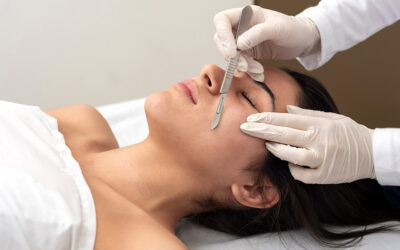There are very few words that cause as much fear or terror as the word “cancer”. Although many cancers are not terminal, when a person hears that they have cancer or that they are at risk for cancer, their thoughts immediately go to the worst case scenario.
With a lot of cancers, there are clear signs that a person has the disease. They might have tenderness in a part of their body, they might feel sick or they might see visible lumps or bumps. Unfortunately, these visible signs are not always present with skin cancer.
Skin cancer grows very slowly, and it does so without giving clear warning signs. For this reason, identifying it early and treating it when it is not life-threatening can be a challenge. Finding skin cancer early requires vigilance on your part as well as on the part of the medical professional. There are a few common things that you should look out for.
It is first important to identify the difference between melanoma skin cancer and non-melanoma skin cancer.
Melanoma skin cancer is what people think about first when they consider skin cancer. This is because it is extremely aggressive, it can grow fast and it can spread from the skin to other organs in the body. Melanoma skin cancers can begin in a normal mole or they can start on skin free of moles. An acronym ABCDE is used to help identify moles that might be melanoma. A= asymmetric, B= irregular borders, C= dark black or varied colors, D= diameter greater than 6 mm or the size of a pencil eraser, E= elevation – if a mole grows rapidly in a vertical fashion and bleeds easily, it is likely a melanoma.
Non-melanoma cancers, on the other hand, are usually classified as basal cell or squamous cell skin cancers. If caught in their early phases, they are generally considered to be relatively non-dangerous and can usually be treated with a simple surgery (either an excision or Mohs surgery if the cancer is on the face, neck or hands). Non-melanoma skin cancer is what you will most commonly see on the parts of your skin that have a lot of sun exposure. They are very common in fair-skinned individuals who have had extensive sun exposure during their lifetimes. It is very rare for this type of cancer to develop in covered places, such as the inside of your mouth.
It is important to examine your skin at least once a month. The skin of the human body is continually changing, and it replaces itself all the time. So, if you have a mark that suddenly appears on the skin or a mole that is growing or bleeding, call us at Torrey Pines Dermatology & Laser Center right away so we can examine it.
If you have noticed any of the above symptoms or just haven’t had your skin checked in a while, visit Torrey Pines Dermatology & Laser Center in La Jolla. Our team is committed to helping patients in the San Diego and surrounding areas prevent skin cancer and catch those that have already developed early. Contact our office today to schedule your appointment.




